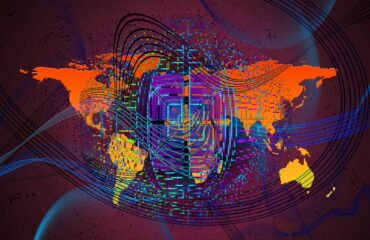By James Myers
(Featured image: ancient Greek philosopher Parmenides)
Metaphysics and the Source of Physics
“Is there a God?” This was the first of ten “Big Questions” that Stephen Hawking (1942-2018) addressed in his last book Brief Answers to the Big Questions. Hawking’s book was the subject of an online presentation and discussion that I attended a few years ago, an event that held the potential of exploring the knowledge of the famed physicist and cosmologist from a philosophical perspective. The event was hosted by a group of amateur physicists, and I participated in the hope of being able to engage in an exchange of ideas that would connect the physical branch of science to its philosophical branch, sharing a common root.
Hawking’s own areas of interest in physics and cosmology, and the other branches of knowledge such as mathematics, biology, astronomy, and chemistry that are commonly called “science”, are studies of applied logic from particular perspectives. The physicist, for example, explores differences in the distribution of logical combinations in the universal fabric of space and time. The mathematician, from a different perspective, explores the logical relationships of numbers in all imaginable combinations of magnitude, and the mathematician’s knowledge informs the studies of the physicists and other scientists.
The branches of knowledge that are commonly labelled as science focus on the important and practical question of “how” observed phenomena in a specific context come to be, and often treat the question “why” such observations are the case. The difficulty with the why question, however, is that it is not necessarily limited to a particular branch of knowledge. Pythagoras, for example, observed from a geometric and mathematical perspective that the square root of two is irrational, but his proof that has withstood the test of time for millennia was one based on reductio ad absurdum. The reason the square root of two is irrational is that there are no mathematically logical means of distributing the single quantity to two integers and therefore irrationality and incommensurability is the only explanation that remains[i]. It is said that science cannot prove a negative, and so as in the case of the square root of two science is sometimes left to contend with reductio ad absurdum as the best of all possible proofs.
Is the Pythagorean proof a fully satisfying explanation for irrational numbers, or are we left to wonder at the purpose for numbers existing in both rational and irrational proportions in the first instance? The challenge with the question why something “is” or “is not” is its ontological nature, and the logic of ontology begins and ends in the idea of being itself. Ontology is the “science of being” that seeks the causes of the becoming of anything, and so ontology obeys no limit of knowledge. Ontology plays no favourite with any particular branch of science, because ontology is the root of them all. Science is knowledge, and knowledge as a unified whole does not end with physics or chemistry or mathematics or any other single subject. It may, for example, be sufficient for a physicist’s particular purposes to understand why the fabric of space and time exists in a way that complies to the field equations codified by Albert Einstein, but the field equations offer no explanation why equations and the combinations of numbers that comprise equal terms should exist in the first place.
Nor do the field equations account for the existence of Albert Einstein as a being of thought whose motivation to discover the equations of space and time was driven by ideas and desires for which there are no known equations. Einstein was able to codify physics, but was never able to codify himself.
Had Einstein tried to codify himself he would have found, as Pythagoras did in another context, the problem of reductio ad absurdum because the act of self-coding is itself an addition to the code which therefore has no end. What is the source of the question “why”, and can we ever know the source of its being when we are all causes of its being – in the past and the future, as much as in the present.
Ontology, which seeks the delineation of being and not being, is perhaps the ultimate question of all science because it invites us to imagine why science and knowledge – and in fact imagination itself – should exist in the first place. At its core, the ontological question goes beyond the physical and is in the domain of the metaphysical. The metaphysical is, in this sense, the meaning of the physical and the search for meaning drives the motions of each of us in our journeys through life. Stephen Hawking himself acknowledged the metaphysical force as he reflected on his theory of the universal no-boundary condition, with these words: “Ever since the dawn of civilization, people have craved for an understanding of the underlying order of the world, why it exists as it is and why it exists at all. There ought to be something very special about the boundary conditions of the universe, and what can be more special than that there is no boundary. And there should be no boundary to human endeavour.”[ii]
The thing about physics is that all physical things operate within boundary limits, in contrast to the non-physical such as human endeavour which functions to its full potential when not subjected to limits. In our bodies each of us is subject to physical limits, but Hawking was an example of human endeavour made possible by brilliance of mind that transcended the severe physical limitations of his body. Although Hawking no longer exists in body, he continues to exist in the form of idea that lies beyond the physical realm, and through his record of written and spoken words we can still explore the realm of idea that was Hawking’s unique contribution to the logic of physics. From the metaphysical perspective of idea, Hawking’s existence did not cease with his death in 2018. Hawking is still very much alive, perhaps more so than ever as his thinking resonates in the research that is now driving science into an understanding of the black hole that exists at the centre of our universe.
Hawking’s ideas are still the subject of discussion at events of the type that I attended a few years ago, and scientists continue to explore his proposition that the universe might be physically finite but in irrational proportions that know no boundaries in their ever-increasing rate of expansion.
In posing the question “Is there a God?” Hawking invited a discussion on either the existence or non-existence of a being that some call “God” and some call by other names, as a source for all of ontology and all of the elements of physics that comprise the universal fabric of space and time. Is there a source of the single arrow of time, of the three dimensions of space, and of the black hole called Sagittarius A* around which everything in galaxy orbits? Why do black holes of varying magnitudes exist at the centre of practically every galaxy we have observed in the universe? Is there a source for the physical elements of the universe, for their molecular formations, for their atomic structures, and for the negatively charged electrons that orbit all atomic nuclei with half-spin? Is there a source for the up orientation of the quarks that comprise the positively charged protons in the nuclei of all atoms, and is it the same source that provides the down orientation of the quarks that we observe in the neutrons of all atomic nuclei with the single exception of hydrogen? Is there a source for the universally neutral balance among all physical objects consisting of positive and negative charge?
And here’s one of the “why” questions: Why is hydrogen, of all the physical elements, being the most plentiful, the exception that has no neutron in its atomic structure and what is the source of this elemental difference?
Hawking’s first of the ten Big Questions was an invitation for me and the other participants in that event two years ago to seek at the most fundamental level the question: “Why does any thing thing exist?”. Hawking’s own answer to the ultimate of ontological questions is well-known, that God does not exist, but the question nonetheless remained in his top-ten list of Big Questions. Perhaps Hawking was not fully satisfied with the conclusion he had drawn, and perhaps he was still wondering at the ontology of human endeavour such as his own that should exist with no theoretical boundary. The first participant to speak in the event would have none of this, however, and dismissed the question as irrelevant and one that he had no patience to discuss. The first speaker declared the question to be “unscientific” and therefore of no meaning in the context of a discussion on a book of ideas written by a physicist.
Ultimately, it seems the first speaker believed that the source of the phenomena of physics is irrelevant to the understanding of physics. Perhaps he believes that physics arises from nothing and that it is possible for being to arise spontaneously from a state of non-being. Upon reflection, this seems a curiously contradictory position to adopt from a perspective that was intended to be scientific, for surely if there is one thing that knowledge of physics has provided to all of us is that for every effect there is a cause. In fact, Isaac Newton encoded the universal physics of cause and effect with his third law of motion which says that for every action there is an equal and opposite reaction. The speaker seemed certain in his proposition that everything in the universe lacks a common source, and so he urged us to move quickly to Hawking’s next nine questions that are concerned primarily with the observable limits of physical action and reaction.
One wonders what discoveries would be made if more minds remained open to probing the source of knowledge itself, rather than limiting themselves to knowledge of observable phenomena. Thomas Hertog, who collaborated with Hawking in the development of the no-boundary proposal, affirmed the reality of the unobservable idea by stating in respect of the recently-discovered Higgs Boson that, “All theories in physics have ingredients and concepts which aren’t directly observable but play a role in deriving predictions for features which are observable.” Although it remains hidden from direct observation, we know the Higgs Boson exists because we can detect its effects on the decay of physical particles.[iii]
That each of us consists of an observable physical being rooted in the fabric of space and time is obvious to the perception of the five senses of sight, taste, touch, hearing, and smell during the waking hours of our lives. But the fact that each of us consists also of a metaphysical being drawing on and contributing to the non-physical realm of ideas is also clear from daily experience and perhaps even more so during the dream state of our sleeping hours. Ideas, hopes, and dreams are the non-physical motivating forces that drive individual achievement and human endeavour. Ideas, hopes, and dreams resonate metaphysically in time after the human being’s own time has ended, as Stephen Hawking’s continue since his death in 2018. The ontology of the ideas of Stephen Hawking has not ended for those of us who remain in the present and continue to apply his knowledge with force and effect while the physical man who contained the knowledge is presently in a state of non-being. The physics of individual being is limited by death, but there is no such boundary for the metaphysics of being.
…Coming in Part 2: The Temptation of the Infinite to the Limits of Being
[i] G.H. Hardy, A Mathematician’s Apology, Cambridge University Press, 1940 (2016 edition, pp. 94-96).
[ii] Before the Big Bang 5: The No Boundary Proposal, a video production of Nick Frank and Ernie Pay, at https://www.youtube.com/watch?v=Ry_pILPr7B8
[iii] ibid



